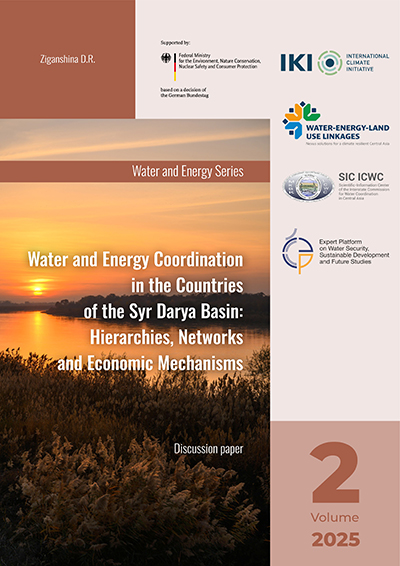No. 80 (604) September 2025
SIC ICWC launched new report: hybrid models of water and energy coordination in the Syr Darya River Basin
According to a new SIC’s report on water and energy in the Syr Darya River Basin, cooperation and coordination become more effecting when the countries improve their national systems and develop regional cooperation mechanisms.

The key messages:
- To achieve sustainable management and coordination in the Syr Darya Basin, the riparian countries shall pursue a dual strategy: enhance their national systems while simultaneously developing regional cooperation mechanisms.
- What have been changed within the countries: strengthened top-down command structure, separation of functions between policymaking, regulation, and day-to-day operation; the energy sector is adopting a corporate governance model, while water sector maintains more traditional administrative models; to combat chronic underfunding, governments are gradually increasing tariffs, give targeted subsidies, and developing new financing mechanisms like public-private partnerships (PPPs) and project financing; formation of multi-level interagency coordination from high-level presidential institutions to special-purpose councils, commissions, and digital dispatching systems.
- Operational coordination is typically based on a hybrid approach, blending administrative mechanisms (like rules and mandates), network formats (such as partnership dialogue and joint planning), and economic tools (like public-private partnerships and investments). There is no single solution: “hierarchical structure” offers strategic control and social guarantees, “networks” build trust and promote joint management, while “economic mechanisms” improve efficiency and mobilize necessary financing. However, only wise combination of these elements will lead to sustainable results.
- For water-energy coordination to put in effect, it is essential to build “bridges” between the two sectors through harmonized data, shared scenarios, and cross-cutting mandates and responsibilities.
- The Kambarata-1 HPP project has a chance to be a compelling example of interstate cooperation, with Kyrgyzstan, Kazakhstan, and Uzbekistan joining forces: political arrangements lead to a common goal, a joint body is established, financing is mobilized and benefits are shared.
Invitation to discussion: We invite experts, representatives of ministries, state-owned companies, donors, and NGOs to discuss concrete actions: how to apply the hybrid model at the national and basin levels, and which “coordination bridges” between water and energy are most effective.
This report was prepared as part of the German Federal Foreign Office’s International Climate Initiative (IKI) project “Regional mechanisms for the low-carbon, climate-resilient transformation of the energy-water-land Nexus in Central Asia.” The project supports the Syr Darya Basin countries in identifying and implementing mutually beneficial water and energy solutions.
The report “Water-Energy Coordination in the Syr Darya River Basin Countries: Hierarchy, Networks and Economic Mechanisms. Discussion paper” (in Russian) is available here.
We welcome your feedback and comments to - sic.icwc.ca@gmail.com